Acer Chromebook R13 review
A premium 2-in-1 Chromebook with some superb standout features
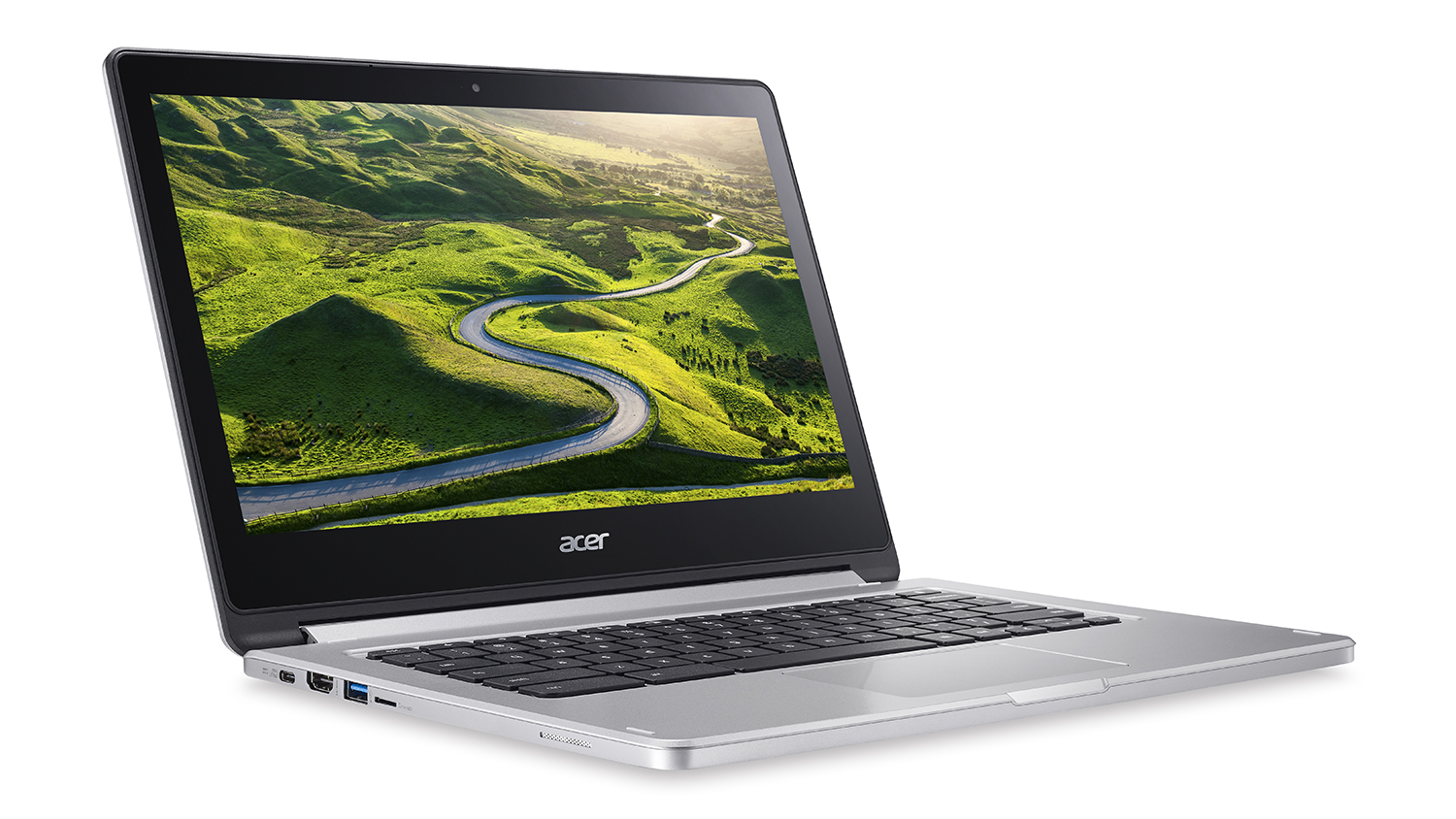

A killer battery life and lightweight ChromeOS combine to create a 2-in-1 dream, that’s only let down by its processor performance and a heavy carry weight. If you’re not after a convertible, there are some cheaper options available with the same performance.
-
+
Impressive battery life; Aluminium encased design; ChromeOS works beautifully with 2-in-1s; Decent keyboard and trackpad; Android support
-
-
No support for Windows apps; Fairly heavy; No keyboard backlighting
This review was first published in 2017 and has since been updated. Prices were correct at the time of publication
The Acer R13 represents a breed of Chromebook that offer users something a little more premium than the host of budget devices on the market. At £399, it's certainly a little pricier than the typical Chromebook, but you're getting some great standout features for that extra investment.
The R13 is a convertible device with a 360-degree hinge and a touchscreen, providing three configurations: Laptop, tent and tablet. It's also packed with a seriously impressive battery, and even supports the installation of Android apps through Google's beta programme.
Chromebook R13: Design
Built from silver aluminium with some pleasingly shiny chamfered edges, the Chromebook R13 looks sleek and feels way more premium than its £399 price would suggest. The Acer logo is also silver, and sits nicely on the lid, although the effect is slightly marred by the presence of the brightly coloured Google Chrome logo that detracts from the overall sleek finish.
That aluminium design works well for a 2-in-1 convertible, as it gives the device the durability you want from a tablet - that reassurance that it may be able to handle a few bumps and scrapes. The build itself features an angular design that gives it a blocky look - although not to everyone's taste, we found it added to the overall sturdy effect.
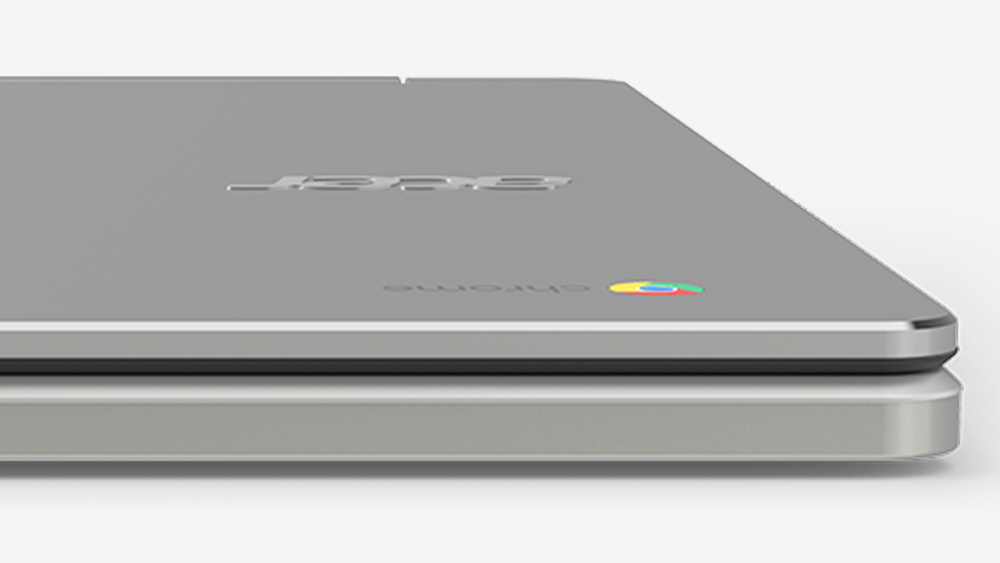
The R13 weighs just under 1.5kg, which is heavier than you might expect from a Chromebook, especially when you look at its competition. The Samsung Chromebook Plus, for example, weighs just 1.1kg. It’s also 15mm, which again is slightly thicker than the Samsung model, but this is barely noticeable. It’s still small enough to carry around during a working day, it’s just a shame about that extra weight, which is especially noticeable when you’re using it as a tablet.
Where the Chromebook excels is in its build quality, which shines when you flip the device into its tent or tablet mode. Its 360-degree hinge provides enough resistance to make the device feel reassuringly sturdy, regardless of how you use it.
However, despite its superb mechanical design, the hinge has been coated with a fairly cheap-looking plastic, which sticks out awkwardly when in tablet mode.
The R13 also lacks colour variations, only being available in silver. It’s a small issue, but having some choice here would be welcome.
In terms of ports, the left side of the R13 sports a single USB 3.0 port, an HDMI port, and a microSD card slot. You also get a USB Type-C port, but this has been reserved for power, so you won’t always have that to play with. On the right side, there’s only a headphone jack. Overall, this will be perfectly adequate for most users, although we would have preferred a dedicated power port to free up the USB C for use elsewhere, such as plugging in a monitor. There is a USB C to 3.0 adapter included in the box, however, which is handy if you need that extra port
Chromebook R13: Keyboard and trackpad
Although this Chromebook sits on the pricier side of the budget spectrum, this is still a low-end device, so don't expect any frills like keyboard backlighting.
What you do get is a well-designed keyboard, providing decent feedback during key presses and a nicely spaced layout that won't trip up your typing. This review was typed up using the keyboard, and we can say it was a joy to use.
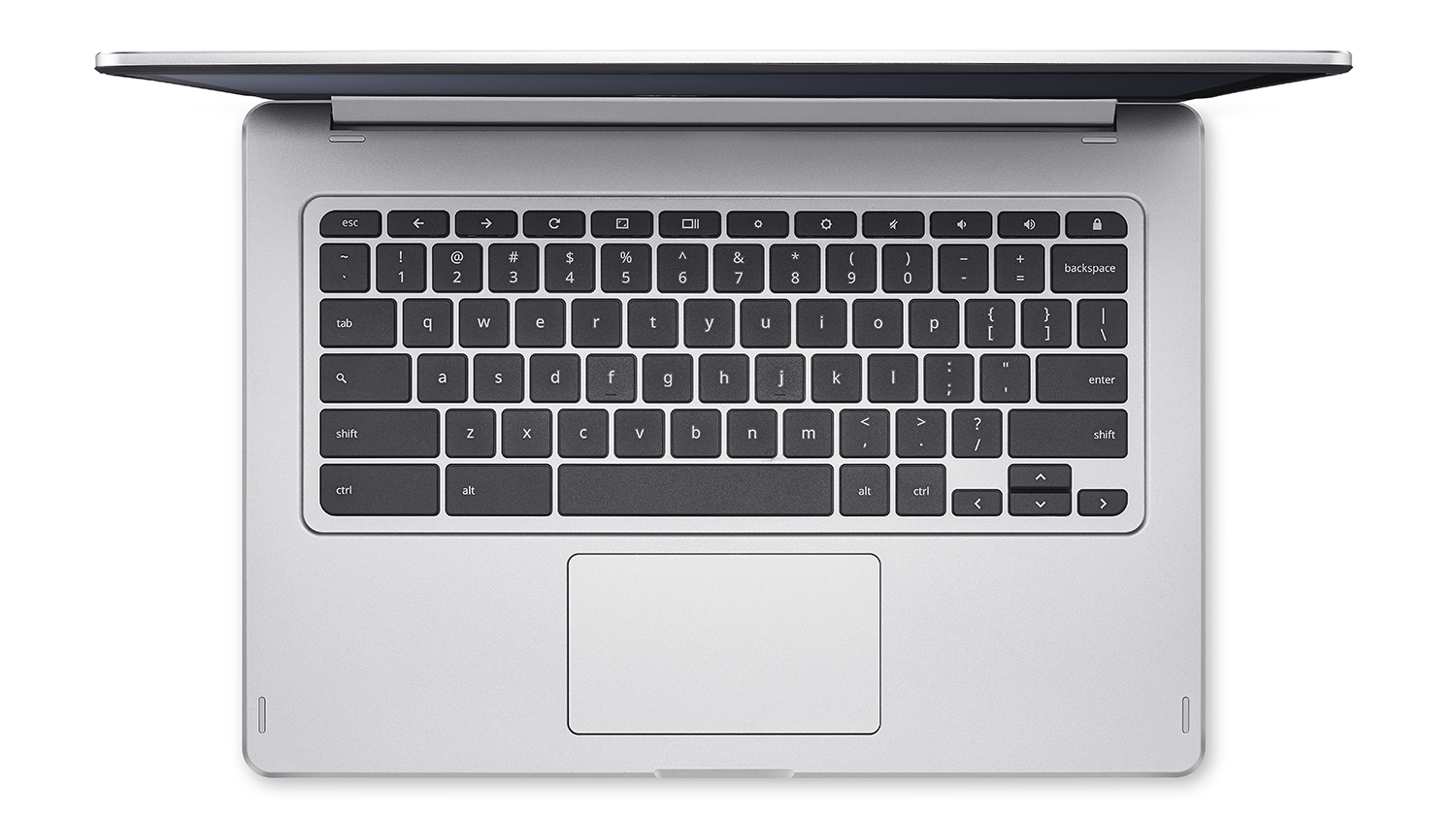
The trackpad is similarly impressive, providing a decent-sized space that feels smooth and responsive. It also performs well with finger gestures and provided a pleasant experience when navigating documents and web pages.
Chromebook R13: Display
A 13.3in screen at 1,920 x 1,080p is a decent size for both laptop and tablet use. Viewing angles offer reasonable flexibility (although nothing too impressive) but its biggest issue is its glossy finish and black borders, which will create a nightmare for those who obsess over fingerprint marks.
In tablet or tent mode, we found the touchscreen display to be responsive and pleasant to use. Although we barely used its tablet configuration, mainly because it's too heavy to use comfortably, its tent shape works beautifully for watching videos or displaying infographics at work.
Chromebook R13: Hardware & Performance
The model we reviewed came with 64GB of eMMC storage, although a smaller 32GB option is available at a slightly lower price. With the inclusion of some preinstalled Google apps, this is reduced down to around 55GB. This isn't a particularly impressive amount, but with Google Drive integrated right into the OS, you shouldn't require much physical storage space anyway.
The R13's 4GB of RAM and 2.1GHz quad-core MediaTek MT8173 processor gave a lackluster performance in our benchmark test. In our JetStream benchmark of JavaScript performance, the R13 scored a fairly dismal 56 - in comparison, HP's excellent 600 Chromebook 13 achieved a score of 128.
Thankfully, given how lightweight Chrome OS is, performance is still nippy enough to provide a genuinely pleasant browsing experience with some extra juice for light multitasking. Google Chrome works beautifully on the R13, and it can easily handle a significant number of tabs before starting to buckle.
Where the R13 really shines is its battery life. In our video playback test the battery was fully drained in 12 hours and 35 mins, actually exceeding Acer's estimate of 12 hours. If you're using the Chromebook as mainly a browsing tool, you could eke out even more. This is seriously impressive, and is certainly value for money given the price point.
Chromebook R13: Android apps
Google has slowly started to roll out support for Android apps to a small number of Chromebooks, the R13 being one of them. But as the Google Play store is only available through a beta channel, we're reluctant to review its functionality until full release. What we can say is that providing users with the option of installing Android apps on a Chromebook is certainly a welcome prospect.
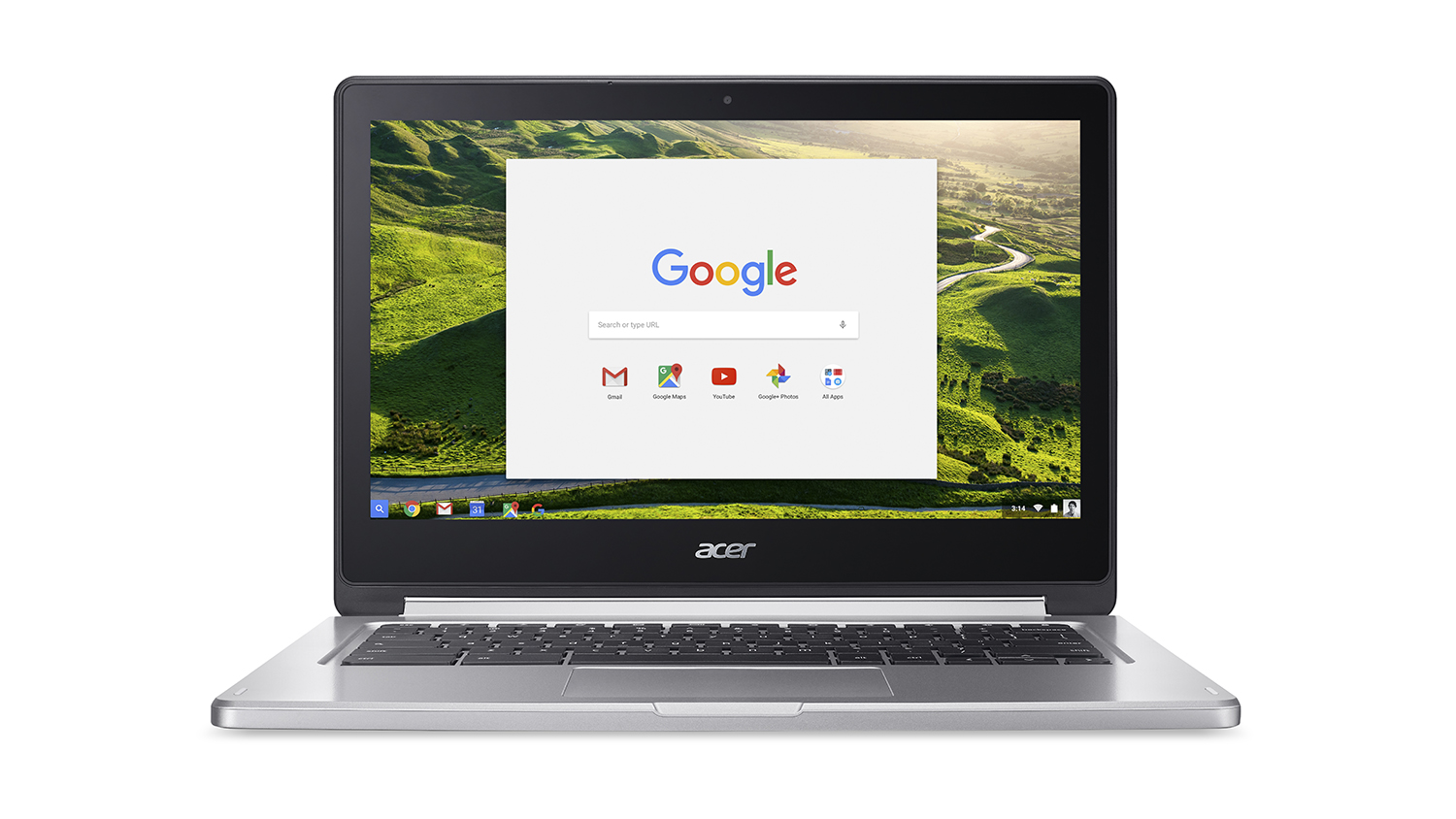
Ultimately, Chromebooks are designed for browsing and using web-based apps. Most popular productivity tools are accessible through a browser, so while the idea of downloading a desktop version of Slack or Dropbox might be appealing for some users, we suspect it will only be useful for accessing a few favourite mobile apps.
In most cases Google provides some decent alternatives to Microsoft products, particularly Google Docs word processing and Drive storage. It may be that you use some of these services regularly, which will make moving to ChromeOS a breeze - but for those who regularly turn to applications built for Windows may find the lack of support for installed software frustrating at first.
Chromebook R13: Verdict
The R13 is perfect for those users looking for something a little more premium than the budget Chromebooks. At £399, you're getting the efficiency of ChromeOS with the flexibility of a convertible.
That impressive battery life also makes it incredibly useful to business customers, as it will reliably run through a full day's work without conking out midway through a meeting. You are also able to access a host of tools through ChromeOS apps and web-based applications, including a host of Microsoft Office alternatives.
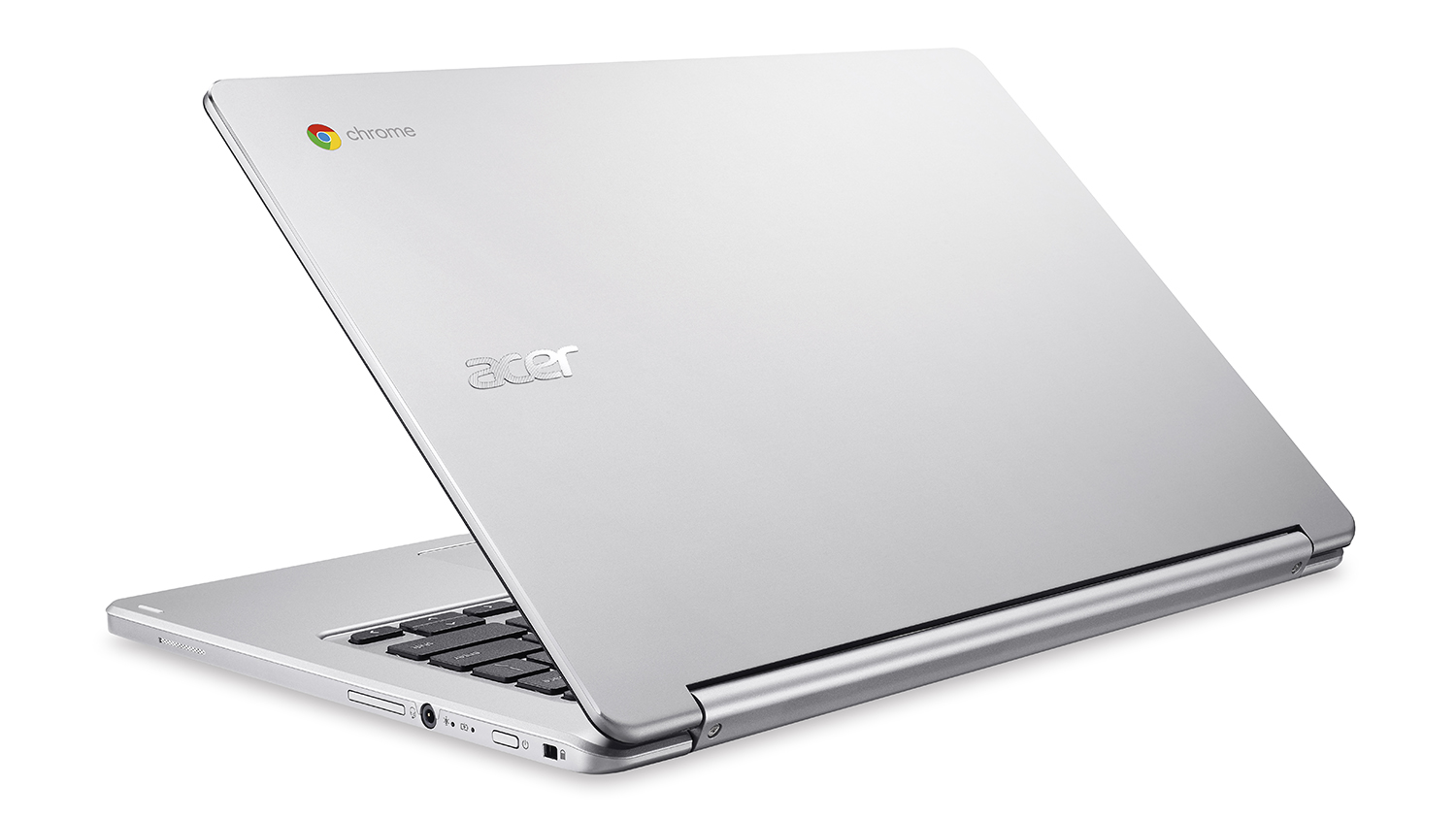
As with any convertible, you will need to decide if you'll actually use the various modes in your work. If you don't quite fancy a convertible, there's likely nothing here that would persuade you to fork out the extra couple of hundred on the R13. Cheaper alternatives are available, including the Acer Chromebook 14, which features the same aluminium design. If you're after something with a higher resolution screen, you could go for the QHD Samsung Chromebook Pro, which also supports Android apps.
Although performance was a little disappointing, the R13 is still capable of handling day to day activity, including multi-tab browsing and some light multitasking. If you are in need of a no-frills machine that is easy to use and will survive a full day of work, the Acer R13 is a solid choice that won't break the bank.
| CPU | MediaTek Quad-Core MT8173 |
| RAM | 4GB |
| Storage | 64GB eMMC |
| Display | 13.3in, 1920 x 1080 FHD |
| Ports | USB Type-C, USB 3.0, HDMI, microSD, headphone jack |
| Dimensions | 15mm, 1.49kg |
Get the ITPro daily newsletter
Sign up today and you will receive a free copy of our Future Focus 2025 report - the leading guidance on AI, cybersecurity and other IT challenges as per 700+ senior executives
Dale Walker is a contributor specializing in cybersecurity, data protection, and IT regulations. He was the former managing editor at ITPro, as well as its sibling sites CloudPro and ChannelPro. He spent a number of years reporting for ITPro from numerous domestic and international events, including IBM, Red Hat, Google, and has been a regular reporter for Microsoft's various yearly showcases, including Ignite.
-
 ‘Phishing kits are a force multiplier': Cheap cyber crime kits can be bought on the dark web for less than $25 – and experts warn it’s lowering the barrier of entry for amateur hackers
‘Phishing kits are a force multiplier': Cheap cyber crime kits can be bought on the dark web for less than $25 – and experts warn it’s lowering the barrier of entry for amateur hackersNews Research from NordVPN shows phishing kits are now widely available on the dark web and via messaging apps like Telegram, and are often selling for less than $25.
By Emma Woollacott Published
-
 Redis unveils new tools for developers working on AI applications
Redis unveils new tools for developers working on AI applicationsNews Redis has announced new tools aimed at making it easier for AI developers to build applications and optimize large language model (LLM) outputs.
By Ross Kelly Published
-
 Google layoffs continue with "hundreds" cut from Chrome, Android, and Pixel teams
Google layoffs continue with "hundreds" cut from Chrome, Android, and Pixel teamsNews The tech giant's efficiency drive enters a third year with devices teams the latest target
By Bobby Hellard Published